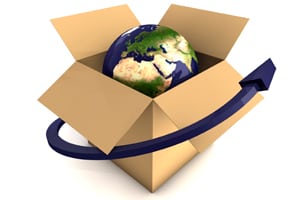 In the MCM Outlook 2014 survey, the largest number of respondents (26%) said UPS was their primary global carrier, followed by FedEx and the United States Post Office (18%) and DHL (12%). This outcome may be the result of a largely U.S.-based audience, as DHL is generally considered the world’s shipping/logistics leader, followed by FedEx and UPS.
In the MCM Outlook 2014 survey, the largest number of respondents (26%) said UPS was their primary global carrier, followed by FedEx and the United States Post Office (18%) and DHL (12%). This outcome may be the result of a largely U.S.-based audience, as DHL is generally considered the world’s shipping/logistics leader, followed by FedEx and UPS.
As with payment solutions in global ecommerce, Jim Okamura, managing partner with Okamura Consulting, said decisions around shipping and fulfillment should be based on a company’s underlying business model and strategy. This includes when to use major carriers versus regional ones, or those with particular expertise in a country or region.
“They need to decide things like will inventory be based in an offshore region or country, in which case it becomes more of a local carrier decision,” Okamura said. “If it’s more of a cross-border model, they need to determine which are the best carriers based on orders that originate from a U.S.-based center.”
Kent Allen, principal of The Research Trust, said while the major carriers do a good job and reach into about 220 countries, merchants should explore their options in terms of regional shippers, consolidators and aggregators or single-trade-lane specialists with enough volume to be able to offer fast delivery at lower rates. “If shipping on an item is $10 less, you’ll see a significant uptick in conversion,” he said.
In some major markets like China and India, ecommerce opportunities are considerable but the infrastructure in outlying areas – or lack of it – present particular logistical challenges.
Chris Boyle, president and CEO of Access Technology Solutions, a panelist in the China overview at Growing Global, recommended that merchants looking to do cross-border ecommerce in China use so-called tier 2 cities – such as Chengdu, Chongqing, Dalian and Shenzhen – as gateways into the country. This is because the Chinese government, in an effort to boost economies in those cities, has built huge warehouses that aren’t seeing a lot of volume.
While the total population of the 15 tier 2 cities accounts for only 8% of China’s population, these markets receive more than 59% of total U.S. imports, according to the U.S. Commercial Service
“You can get a good deal of clearance on fees, customs and duties working with officials in the tier 2 cities,” Boyle said. “In the big cities, with so much volume flowing through, you’re just one in a crowd. So there are some operational advantages in tier 2. However, there are very rudimentary logistics networks if you get too far out.”
For more about global shipping, check out Mike O’Brien’s MCM Outlook 2014 report on Global Ecommerce.
